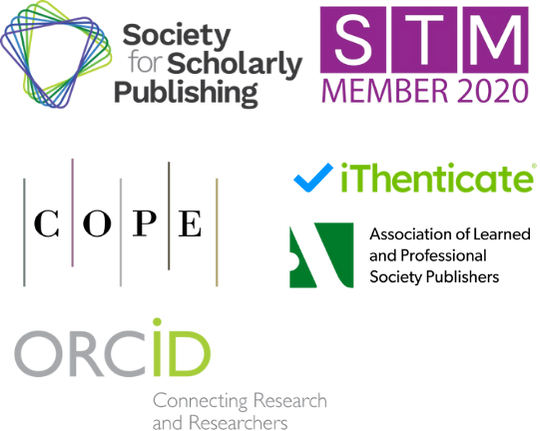Cost Control and Risk Management in the Logistics and Transportation Segment of the Pulp Supply Chain
DOI:
https://doi.org/10.71222/nvmgpf46Keywords:
pulp supply chain, logistics cost, risk management, transportation, digitalizationAbstract
This review examines cost control and risk management strategies in the logistics and transportation segment of the pulp supply chain. The study first analyzes the structure and key characteristics of pulp logistics, highlighting the critical nodes and cost drivers that influence operational efficiency. It then explores major cost components, including transportation, handling, storage, and inventory, and evaluates strategies such as route optimization, multimodal transport, automation, and collaborative logistics to reduce expenses. Key risks—including operational, financial, environmental, geopolitical, and market-related factors—are identified and assessed for likelihood and impact, with examples illustrating potential disruptions. The review further discusses mitigation approaches, including insurance, contingency planning, contract management, and the adoption of digital technologies like IoT and AI for real-time monitoring and predictive decision-making. Finally, emerging trends, such as digitalization, AI-driven logistics, and sustainable transport solutions, are examined, emphasizing the integration of cost and risk management for resilient and efficient supply chains. Recommendations for practitioners and future research directions are provided to enhance supply chain performance, sustainability, and risk resilience.
References
1. Z. Homayouni, L. LeBel, N. Lehoux, A Review of Performance Indicators for the Pulp and Paper Supply Chain, in IISE Annu. Conf. Proc., pp. 1-6, 2024.
2. S. Yang, “The Impact of Continuous Integration and Continuous Delivery on Software Development Efficiency”, J. Comput. Signal Syst. Res., vol. 2, no. 3, pp. 59–68, Apr. 2025, doi: 10.71222/pzvfqm21.
3. B. Feng, X. Hu, I. J. Orji, Multi-tier supply chain sustainability in the pulp and paper industry: a framework and evaluation methodology, Int. J. Prod. Res., vol. 61, no. 14, pp. 4657-4683, 2023, doi: 10.1080/00207543.2021.1890260.
4. C. Kogler, S. Schimpfhuber, C. Eichberger, P. Rauch, Benchmarking procurement cost saving strategies for wood supply chains, Forests, vol. 12, no. 8, p. 1086, 2021, doi: 10.3390/f12081086.
5. M. Ptak, A. Skowrońska, H. Pińkowska, M. Krzywonos, Sugar beet pulp in the context of developing the concept of circular bioe-conomy, Energies, vol. 15, no. 1, p. 175, 2021, doi: 10.3390/en15010175.
6. D. M. Rahmah, E. Mardawati, R. Kastaman, T. Pujianto, R. Pramulya, Coffee pulp biomass utilization on coffee production and its impact on energy saving, CO2 emission reduction, and economic value added to promote green lean practice in agriculture production, Agronomy, vol. 13, no. 3, p. 904, 2023, doi: 10.3390/agronomy13030904.
7. K. Baghizadeh, D. Zimon, L. Jum’a, Modeling and optimization sustainable forest supply chain considering discount in transportation system and supplier selection under uncertainty, Forests, vol. 12, no. 8, p. 964, 2021, doi: 10.3390/f12080964.
8. L. Yun, “Analyzing Credit Risk Management in the Digital Age: Challenges and Solutions”, Econ. Manag. Innov., vol. 2, no. 2, pp. 81–92, Apr. 2025, doi: 10.71222/ps8sw070.
9. A. N. Sonsale, J. K. Purohit, S. D. Pohekar, Renewable & alternative energy sources for strategic energy management in recycled paper & pulp industry, Bioresour. Technol. Rep., vol. 16, p. 100857, 2021, doi: 10.1016/j.biteb.2021.100857.
10. F. Aggestam, A. Giurca, Implementing circular-bioeconomy principles across two value chains of the wood-based sector: A conceptual approach, Land, vol. 11, no. 11, p. 2037, 2022, doi: 10.3390/land11112037.
11. S. Varongchayakul, S. Jomkamsing, P. Chaiprasert, Maximizing sugars production from cassava pulp using efficient hydrothermal pretreatment coupled with cellulase, Biomass Convers. Biorefin., vol. 15, no. 8, pp. 12163-12174, 2025, doi: 10.1007/s13399-024-06041-y.
12. M. Dai, M. Sun, B. Chen, L. Shi, M. Jin, Y. Man, et al., Country-specific net-zero strategies of the pulp and paper industry, Nature, vol. 626, no. 7998, pp. 327-334, 2024, doi: 10.1038/s41586-023-06962-0.
13. Y. Li, H. K. Chan, T. Zhang, Environmental production and productivity growth: evidence from european paper and pulp manufacturing, Ann. Oper. Res., vol. 349, no. 2, pp. 477-494, 2025, doi: 10.1007/s10479-018-3126-2.
14. V. Simard, M. Rönnqvist, L. LeBel, N. Lehoux, Improving the decision-making process by considering supply uncertainty–a case study in the forest value chain, Int. J. Prod. Res., vol. 62, no. 3, pp. 665-684, 2024, doi: 10.1080/00207543.2023.2169382.
Downloads
Published
Issue
Section
License
Copyright (c) 2025 Ronglin Wang (Author)

This work is licensed under a Creative Commons Attribution 4.0 International License.


